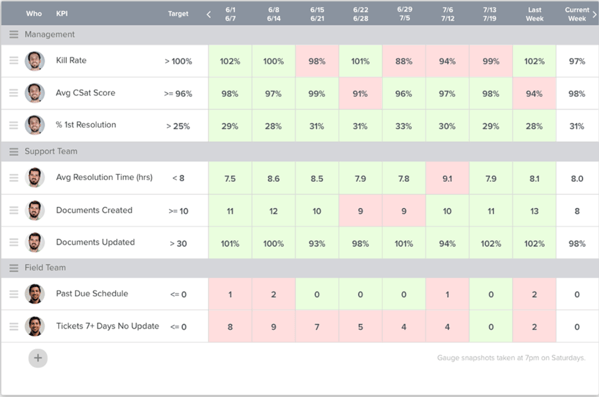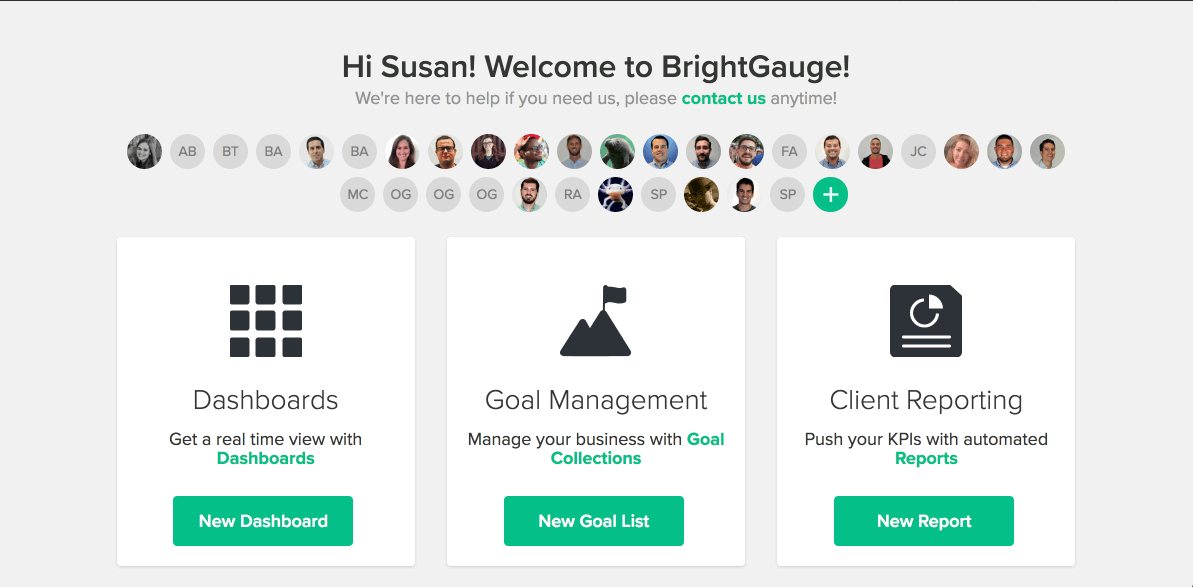Run Your Business Like Google

It’s no secret that a ton of companies look up to Google and the way they run their business (us included). What if I told you that you could implement one of Google's core management techniques in your company tomorrow? And that within 6-12 months it would improve your business to grow faster and run more efficiently and calmly.
Would you believe me if I told you it all centers around goal management? Yes, GOALS!!!
We say Goals, Google says OKRs
Google follows a simple, yet powerful goal management system called OKRs, which is an acronym for Objective, Key Results. The short history is that Andy Grove at Intel came up with this system as an iteration to Peter Drucker’s original Management by Objective philosophy. Grove’s approach, which later became OKRs, was popularized at Intel and then introduced to Google in their early days by John Doerr, an investor who used to work at Intel. John just recently wrote a book called Measuring What Matters, and according to him (and Larry Page), Google credits much of their scaling success to being able to set proper goals company wide.
Making sense of OKRs
So what the heck is an “OKR” and how does it work? It’s incredibly simple. An Objective is the over archiving statement of what is to be accomplished in a given time period. The Key Results are the measurable items that, once completed, mean the Objective has been reached. Here’s an example:
Objective: Expand into XYZ New Market
Key Results:
- Hire or transition 1 new employee focused on XYZ Market
- Build 10K in new MRR pipeline in XYZ Market
- Close 2.5K in services revenue in XYZ Market
Think of your Objectives as an aspirational statement about what you want to accomplish - they are easy to remember and easy to rally the troops around. Key Results are then the specific and measurable items (the boring stuff!). And just like many goal management systems, Key Results are time bound and typically done every quarter. OKRs keep everyone engaged and in sync with the aspirational (the Objective), but focused on the tactical (the Key Results).
Putting OKRs into practice
Google bases actions on knowing that in order to be successful with goal usage, you have to be well-rounded when implementing goals in your company. We’re in the habit of establishing goals here at BrightGauge and we’ve picked up a few pointers along the way that will help you unleash the power of goals:
- Alignment is key - buy in from the top, and everyone else as well.
- Everyone in the company should have a few goals (OKRs) per quarter and be okay with missing 1-2 of them.
- Don’t tie in goal achievements to performance reviews or salary bumps.
To work like Google, you have to be disciplined with your goal management. And as always, it has to start at the top. The leadership team should have goals and they should be transparent to everyone. When everyone sees leaders going for stretch goals, not only do they understand priorities better, but they see that it’s okay to stretch for something BIG themselves. It’s okay to not be afraid to fail and to not settle for mediocrity.
This can seem intense. But because of this culture of aggressive goal setting, Google does not tie performance or compensation to goals, they are completely separate. This can be hard to fathom and hard to do but if you want to push people to stretch, you can’t tie in compensation because we’re only human and people would end up choosing only attainable goals.
BrightGauge can help you get started

I’ve always bought into the idea of goals. I think it’s important to have constant motivation and a culture of accountability and transparency. Plus, since I’ve been consistent about goal-setting at BrightGauge, the proof has been in the numbers. Since we implemented goals seriously in early 2016, we’ve had our best growth years while also running more calm and focused. It’s no coincidence, setting goals across the company has helped propel our growth.
All that being said, to run like Google, all you have to do is get started using Goals in your company. You’re not going to get it right the first cycle or second, but you’ll notice a massive difference in your company 6 to 12 months later when everyone is on the same page, engaged, and motivated to hit their goals.
Using our Goals feature can help you get started since we automate some of the annoying stuff (reminders and data pulling). Your employees will be reminded to check into their goals on a weekly basis and assess whether they’re on or off track. Again, since OKRs are ideally not tied to performance and compensation, this will simply keep your team working towards a greater good, without unnecessary pressure.
You might be stumped by what to focus on, so we’ve put together a guide for you that can help inspire company-driven goals. Just click on ‘Find Inspiration’ when you start a new goal list in Goal Management.

Give it a shot and if you need help, let us know. We love this stuff!
Free MSA Template
Whether you’re planning your first managed services agreement, or you’re ready to overhaul your existing version, we've got you covered!


